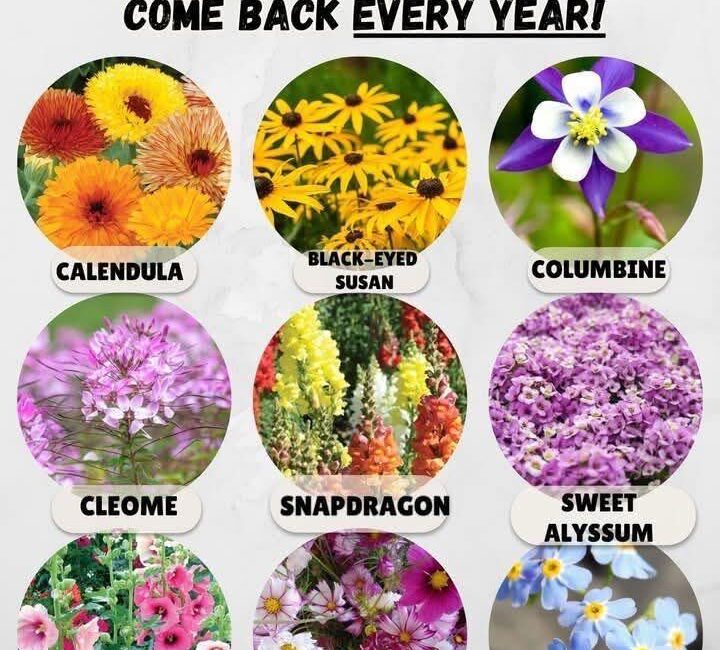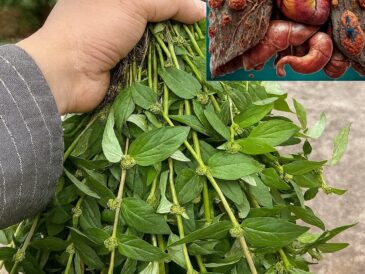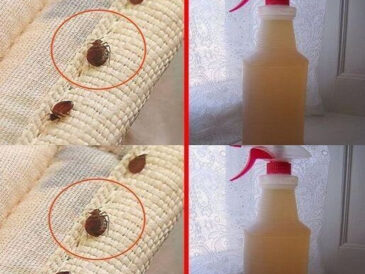How It Self-Seeds:
Snapdragons produce small seeds that naturally disperse after the flowers fade. The plant then germinates the following spring, often growing in the same spots, though you may also find it in new areas. Self-seeding snapdragons are an easy way to ensure beautiful blooms year after year with minimal maintenance.
6. Sweet Alyssum: Lobularia – A Fragrant and Generous Plant
Sweet Alyssum, or Lobularia, is a small perennial plant ideal for beginner gardeners. It produces masses of small, fragrant flowers in shades of white, purple, or pink.
Origin and Characteristics:
Native to the Mediterranean region, sweet alyssum grows as compact bushes, making it perfect for containers, borders, or ground cover. The tiny, fragrant flowers attract bees and other pollinators, helping to improve biodiversity in your garden.
How It Self-Seeds:
Sweet Alyssum is a prolific self-seeder that produces countless seeds which fall to the ground when the flowers die. These seeds germinate in the following spring, filling your garden with fragrance and color. With very little care, Alyssum will return year after year, creating a low-maintenance, lovely display.
7. Hollyhock: Alcea – A Tall and Elegant Plant
Hollyhock, or Alcea, is a tall and imposing perennial plant known for its large, bell-shaped flowers, which come in vibrant hues like pink, red, yellow, and white. It is perfect for gardeners looking to add verticality and dramatic appeal to their gardens.
Origin and Characteristics:
Native to Asia and southern Europe, hollyhocks can grow up to 2 meters tall and produce beautiful flowers from summer to fall. It thrives in sunny spots and well-drained soil. The plant is also attractive to pollinators, including bees and butterflies.
How It Self-Seeds:
The seeds of hollyhocks fall naturally when the flowers have bloomed and faded, and they easily germinate in the spring. This means you can expect new plants every year without needing to replant. If you allow the seeds to spread, hollyhocks will continue to flourish and grow in your garden year after year.
8. Cosmos: Cosmos – A Flower of Exuberance
Cosmos is a perennial plant loved for its abundance of flowers and its ability to thrive in a variety of soil types. Its light, airy blooms bring a joyful feel to any garden.
Origin and Characteristics:
Native to Mexico, cosmos produces simple or double flowers in colors ranging from white and pink to red and orange. The plant prefers full sun and well-drained soil but is adaptable to most conditions. Cosmos also attracts beneficial pollinators to your garden.
How It Self-Seeds:
Cosmos is an abundant self-seeder. Its seeds fall naturally to the ground as the flowers fade, and they will germinate the following spring. This ensures that your garden will be filled with cosmos flowers year after year, creating a lively and colorful display.
9. Forget-Me-Not: Myosotis – A Plant of Remembrance
Myosotis, or Forget-me-not, is a small perennial plant that has captured gardeners’ hearts with its tiny blue flowers and its symbolism of eternal love. This plant is resilient and tends to self-seed readily in gardens.
Origin and Characteristics:
Forget-me-not is native to Europe and Asia and produces small blue, pink, or white flowers that are especially charming in shaded or partially sunny gardens. This plant’s compact nature makes it ideal for borders or pots, and its flowers bring a gentle pop of color to any space.
How It Self-Seeds:
Forget-me-not seeds naturally fall to the soil when the flowers fade, and they easily germinate the following year. This is a plant that thrives on little care, self-seeding each season to create an ongoing display of delicate, nostalgic blooms.
Conclusion: A Thriving Garden with Self-Seeding Perennials
Perennial plants that self-seed year after year, such as calendula, rudbeckia, columbine, and many more, offer an excellent way to create a vibrant and sustainable garden. In addition to being beautiful, these plants are generally easy to care for, requiring minimal effort once established. Their ability to return year after year allows for the creation of a garden that renews itself naturally, offering continual beauty and biodiversity. Whether you are an experienced gardener or a beginner, these plants are perfect for cultivating a low-maintenance, ever-evolving garden.




